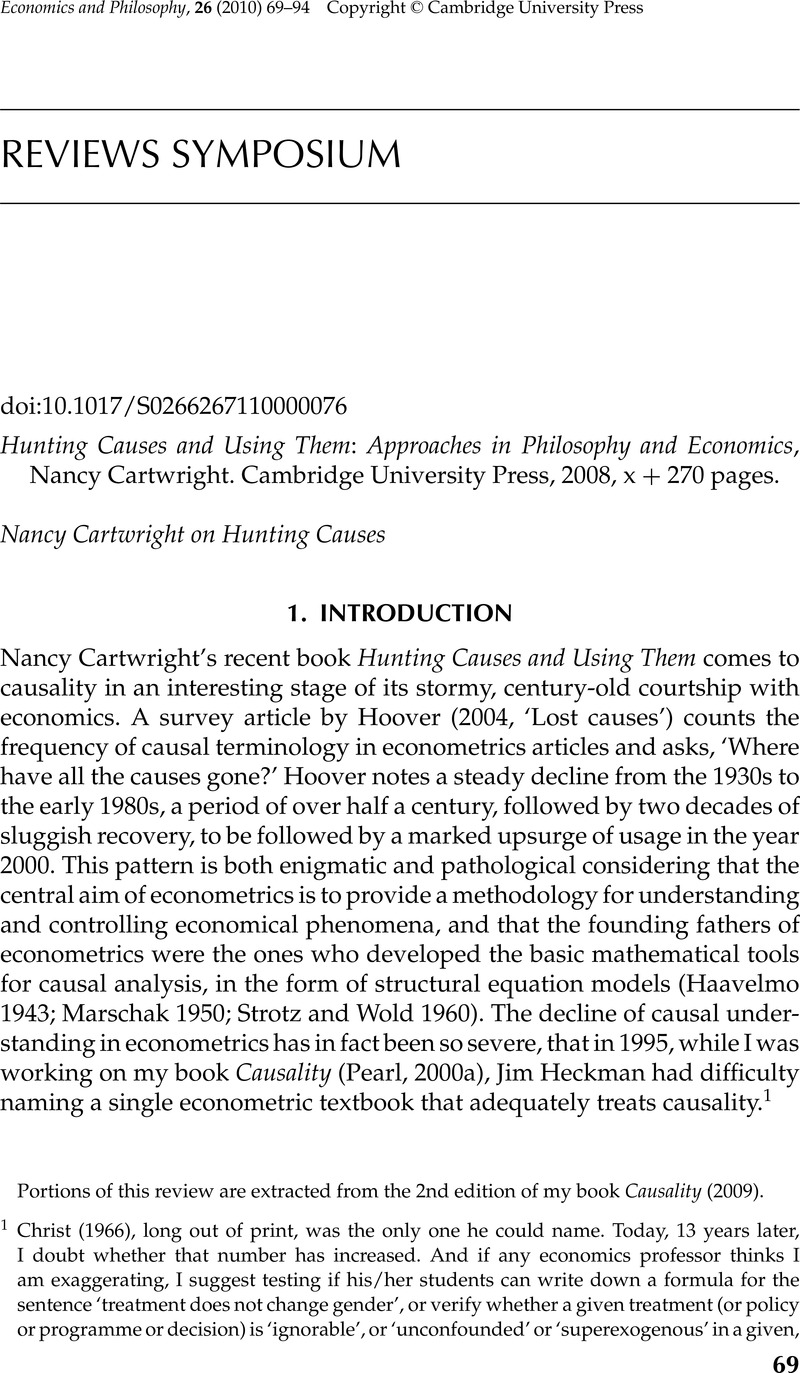Crossref Citations
This article has been cited by the following publications. This list is generated based on data provided by Crossref.
Kuorikoski, Jaakko
2012.
Mechanisms, Modularity and Constitutive Explanation.
Erkenntnis,
Vol. 77,
Issue. 3,
p.
361.
Mateiescu, Sebastian
2012.
Probabilities, Laws, and Structures.
p.
141.
Pearl, Judea
2015.
TRYGVE HAAVELMO AND THE EMERGENCE OF CAUSAL CALCULUS.
Econometric Theory,
Vol. 31,
Issue. 1,
p.
152.
Casini, Lorenzo
2016.
Can Interventions Rescue Glennan’s Mechanistic Account of Causality?.
The British Journal for the Philosophy of Science,
Vol. 67,
Issue. 4,
p.
1155.
Schaffer, Jonathan
2016.
Grounding in the image of causation.
Philosophical Studies,
Vol. 173,
Issue. 1,
p.
49.
Schaffer, Jonathan
2016.
Scientific Composition and Metaphysical Ground.
p.
143.
Pearl, Judea
2018.
Does Obesity Shorten Life? Or is it the Soda? On Non-manipulable Causes.
Journal of Causal Inference ,
Vol. 6,
Issue. 2,
Northcott, Robert
2021.
Pre-emption cases may support, not undermine, the counterfactual theory of causation.
Synthese,
Vol. 198,
Issue. 1,
p.
537.



